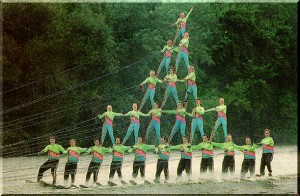
PageRank Sculpting Isn’t Easy
PageRank sculpting directs the flow of search engine spiders, indexing, PageRank, and other trust and authority assignations by using tools to open and close valves in the pipes of your website’s hierarchy. PageRank sculpting is vital to SEO management of large, dynamic websites, and it helps smaller websites doing redesigns. It is also crucial in dealing with Google’s Penguin and Panda updates. Visibility Magazine’s Fall 2012 edition publishing my complete guide to this highly technical topic. Here, I offer the big picture.
Google’s Matt Cutts noted the importance of PageRank sculpting, being sure to distinguish it from the bogus nofollow sculpting. (For more on this, see http://searchengineland.com/pagerank-sculpting-is-dead-long-live-pagerank-sculpting-21102.)
In PageRank sculpting, it’s important to understand the distinctions among spidering, indexing, and the passing of PageRank. Spidering includes a page in SERPs (search engine results pages), whereas indexing goes further to include the page’s words in the index, which is matched to searches. Pages can be spidered without PageRank assigned, and indexed pages may or may not get PageRank or pass it on to other pages in your website.
PageRank sculpting deploys standard tactics in combinations that should vary to fit each website’s CMS, navigation scheme, and budget. These tools are:
- The robots.txt file
- 301 redirects
- Canonical meta-tags
- Pagination with rel=“next” and rel=“prev”
- The noindex meta-tag
- X-Robots-Tag HTTP header directive
- XML sitemaps
- The nofollow meta-tag
- Advanced and less essential tools (perhaps for a future post here) include cache controls, last-modified headers, the unavailable_after X-robots-tag, and a few others.
In addition to these tools, most of the standard rules of CMS-SEO pertain to PageRank sculpting.
(For an overview of CMS-SEO, see VisibilityMagazine.com/internet_marketing_magazine/previous_issues/html/december-2007 and VisibilityMagazine.com/disc-inc/rob-laporte/cms-and-database-seo-guide).
Choosing and coordinating the best PageRank sculpting tools for your website, and avoiding conflicts among the tools, is one of the most difficult jobs in SEO. There’s a need for an article or ebook which shows various scenarios and pitfalls. A good primer on avoiding conflicts is seomoz.org/blog/robot-access-indexation-restriction-techniques-avoiding-conflicts.
Once learned, it’s difficult to remember which of the tools block or redirect spidering, keyword indexing, and PageRank, and my Visibility Magazine article will serve as a reference. The important take-away in this blog post is simply to know what you don’t know.
The search engines will likely change relevant rules or become better at dealing with sites that have weak or faulty PageRank sculpting, but usually such changes are backward compatible (though recently Google has broken this implied contract with webmasters a few times). So, PageRank sculpting, like its parent categories of CMS-SEO and technical SEO, is an investment where you “write once, and profit in perpetuity.”


